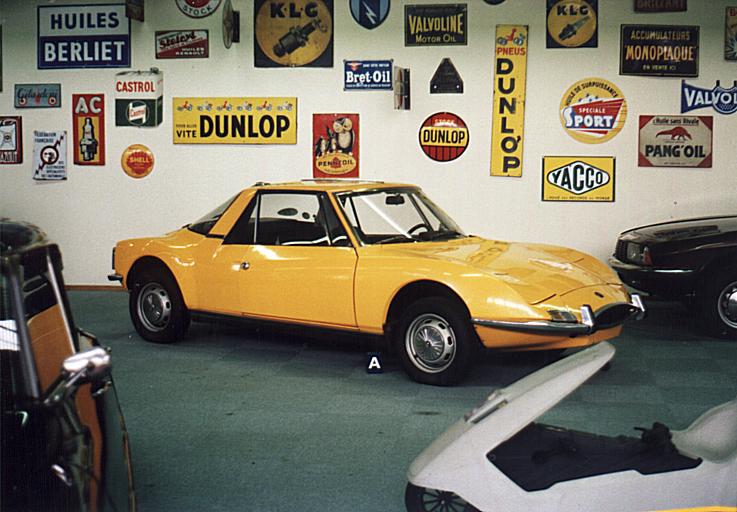Description
The Matra 530 LX, introduced in 1970, was the second and most refined evolution of Matra’s pioneering mid-engined leisure GT. Building on the foundations of the earlier 530 A, the LX represented a major step forward in design, comfort and usability, transforming Matra’s innovative concept into a more polished and visually cohesive sports 2+2. It retained the essential character of the original — mid-engine balance, targa-style open-air capability and family-friendly seating — while addressing the shortcomings of the first model with improved styling, better build quality and greater practicality.
The 530 LX kept the same fundamental layout as the 530 A: a steel backbone chassis supporting a transversely mounted Ford 1.7-litre V4 engine behind the passenger compartment, and fibreglass body panels secured to the frame. This architecture gave the car excellent corrosion resistance, low weight and a low centre of gravity, while allowing Matra to shape the body without the constraints of heavy steel tooling. The backbone chassis also provided good rigidity, making the LX stable and confidence-inspiring at speed.
The Ford Taunus-sourced 1,699 cc V4 engine remained unchanged, producing around 70 horsepower and powering the rear wheels through a four-speed manual gearbox. While not fast in outright terms, the LX’s light weight and favourable aerodynamics made for relaxed and flexible performance, with a top speed in the region of 170 km/h (105 mph). The V4’s compact dimensions were essential to the car’s packaging: transverse installation freed space for the 2+2 cabin and allowed the car to retain its compact footprint.
Suspension was fully independent, with double wishbones at the front and coil-spring trailing arms at the rear. The LX offered a notably smoother and more refined ride than the earlier 530 A, without compromising the balanced handling that came from its mid-engine layout. Steering remained light and communicative, and front disc brakes with rear drums provided reliable stopping power. The car’s long wheelbase and evenly distributed mass contributed to its stability on both fast roads and rougher surfaces.
Styling was the most visibly transformed element of the LX. Designed by Michel Beligond, the LX featured a cleaner, more modern body with flowing lines and a more elegant silhouette. The original car’s angular nose and heavy rear section were softened, giving the LX a more cohesive, aerodynamic appearance. The pop-up headlights were retained, but the grille and bumper arrangements were redesigned for a more harmonious front end. The targa-style roof — a defining 530 feature — remained, with a removable central panel and a hinged rear window section that allowed for multiple open-air configurations.
Inside, the LX benefitted from a significant boost in comfort and practicality. The cabin was redesigned with higher-quality materials, better sound insulation and a revised dashboard layout featuring clearer instrumentation and more ergonomic controls. The 2+2 seating remained, with the rear seats suitable for children or occasional use, and the increased interior refinement broadened the car’s appeal beyond pure enthusiasts. A larger boot and improved storage options enhanced its usability as a touring car.
On the road, the 530 LX delivered a driving experience that balanced composure with accessibility. It did not aim to be a high-performance machine but instead excelled as a light, agile GT that rewarded smooth driving. Road testers praised its ride comfort, visibility and secure mid-engined handling. It was equally at home in town, on country roads or cruising on the autoroute, and its open-roof versatility added to its charm.
The LX became the most successful version of the 530 series, with production running until 1973. More than 4,600 units were built, making it the most common Matra model prior to the later Bagheera. Its popularity established Matra’s identity as a maker of clever, practical and unconventional road cars — a reputation that would continue with the Bagheera, Murena and Rancho.
Today, the Matra 530 LX is recognised as the definitive version of the early Matra road-car line. With its improved styling, better comfort and versatile layout, it remains a distinctive and forward-thinking GT, notable for its combination of everyday practicality and mid-engine engineering. It stands as one of the most original European sports cars of the early 1970s and an important chapter in Matra’s highly inventive automotive history.
